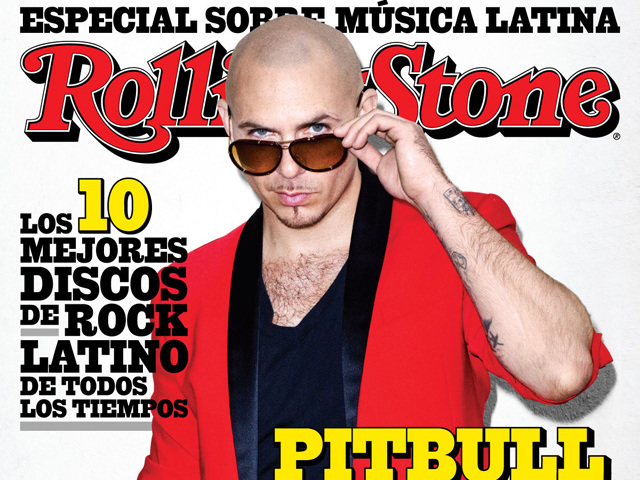In a move that’s not quite business as usual, Rolling Stone magazine will be rolling out a new special issue that will feature a 15-page special section and Spanish-language ads. And the iconic magazine – which is in its 45th year of publication – will also have a secondary cover reflecting the Latin-themed makeover, complete with Spanish headlines and crossover rapper Pitbull.
“This is our first chance as a magazine to present Latin coverage in a unique way and something I think our Latino readers will really enjoy,” said Monica Herrera, senior editor atRollingStone.com.
Herrera, who supervised the editorial direction of the Latin Hot List section in the Nov. 22 issue, said that she had previously pitched Latin bands to the magazine without much success, but that the new section gave her the opportunity to feature hot performers and influences like Mexican band Café Tacuba, Pulitzer-Prize-winning-author Junot Díaz, Puerto Rican group Calle 13 and “Modern Family” star Sofia Vergara.
The special section features interviews in English, with “bonus” side bar articles in Spanish.
“It’s meant to be a reflection of a growing Latino readership that feels comfortable reading in Spanish, but may use English as their dominant language – just like me,” says Herrera, who is of mixed Cuban and Costa Rican heritage.
The issue – which hits newsstands Friday and took just five weeks to put together (“we closed during Hurricane Sandy in New York – a little stressful,” says Herrera, who cut her editorial chops at Latina magazine) – is aimed at bilingual, acculturated Latinos; an increasingly influential audience whose buying power and attention is quickly becoming a focal point for advertisers.
“As an agency, we’re not interested solely in creating ads aimed at a particular segment. We want to be part of their world and create relevant content around that – the Latino audience is our driver,” said Gustavo Razzetti, executive vice president and managing director at multicultural agency Lápiz.
Razzetti, whose agency represents three Procter & Gamble brands that placed ads in the issue – Bounty, Charmin and Gain – said that the idea for a special Latin issue first arose amid conversations about producing concerts and events between the agency and Rolling Stone.
“We decided to go a step further and create content that celebrates Latinos and the crossover that Latin and American cultures are experiencing right now,” said Razzetti. “You can check out the magazine and see [James Bond film franchise star] Daniel Craig or you can flip it over and see Pitbull. For advertisers in the past, there was one door for Latinos and another for the rest of the market, but this magazine represents that there’s one single world with a door each for Latin culture and one for mainstream culture – and Latinos have the power to access that world however they choose.”
Rolling Stone’s readers are 60 percent male and 17 percent of its readership is Latino, according to GfK MRI audience research published in the New York Times.
“This initiative wasn’t born as an advertising section,” says Razetti. “People are buying Rolling Stone and this section celebrates the great representation of Latino culture that brings Hispanics together.”
Even so, the buying power of young Latinos has become so significant that Rolling Stone would do well to consider releasing similar special issues regularly, says Roberto Orci, chairman of the Association of Hispanic Advertising Agencies.
“If you’re a regular Rolling Stones reader, you might appreciate this issue and it will increase brand loyalty, but a better approach would be to do what People en Español did, which was to first release periodic issues until a successful brand was established,” said Orci. “I personally wouldn’t build an advertising plan around Rolling Stone with this singular issue. I congratulate them for tipping their hats to us Latinos, but I would encourage them to think about the market with gravitas and consider something aimed solely at Latino millennials.”
After all says, Orci, a one-time special Latino initiative by Rolling Stone shouldn’t be considered a benevolent initiative to accommodate Hispanic readers.
“We develop Hispanic marketing strategy for business reasons – it’s not a social cause,” says Orci. “What we’re seeing is just the tip of the iceberg. As the Latino presence in the United States grows, so will the content for that market.” by Nina Terrero [NBC]


